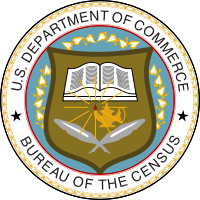Census Data Documents African Language Use in the United States
Some 60 million Americans over the age of 5 speak a language other than English at home. This is about one fifth of all Americans. Nearly 900,000 Americans speak an African language at home. Among the most common African languages in the U.S. are Kru, Ibo, Yoruba, Cushite, and Swahili.
For Black Youths, Stress Can Lead to Health Problems Later in Life
African American youth who are routinely subjected to stress produce higher levels of the stress hormone cortisol that can build up and lead to health problems much later in life.
How Anti-Affirmative Action Admissions Laws Impact Campus Diversity Efforts
The authors found a reluctance by administrators who are charged with diversity missions at universities prohibited from using race in admissions decisions to deal specifically with race in their efforts to create a more welcoming campus.
Princeton University Study Finds Increase in Middle-Age Mortality for Whites, But Not for Blacks
After 1998, death rates among middle-aged White non-Hispanic Americans began to rise at a steady clip of half a percent per year. For non-Hispanic, middle-aged African-Americans, mortality rates declined 2.6 percent per year.
A Snapshot of the Gender Gap in African American Enrollments in Higher Education
In October 2014, there were 1,802,000 Black women enrolled in all levels of higher education in the United States, compared to 1,132,000 Black men. Thus, women made up 61.4 percent of all African American enrollments.
Black Graduates of HBCUs Fare Better Than Other African American College Graduates
A new study by Gallup Education shows that Black students who graduate from HBCUs may go on to a more satisfying life than Black graduates of predominately White colleges and universities.
A Check-Up on the Racial Gap in Medical School Applications and Enrollments
In 2015, the number of Black applicants to U.S. medical schools was up a whopping 16.8 percent from 2014. Blacks were 7.6 percent of all medical school matriculants in 2015. This was up from 6.9 percent in 2014.
Among New High School Grads, Blacks Are More Likely Than Whites to Enroll in...
Among recent high school graduates, Blacks are more likely than Whites to enroll in higher education. But if we look at recent high school graduates who are full-time students at four-year colleges and universities, Whites are more likely to be enrolled than Blacks.
Blacks Are More Likely Than Whites to Be Enrolled in School
More than 30 percent of African Americans over the age of 3 are enrolled in school at some level compared to 22 percent of Whites. But Whites still hold an edge in college enrollments, particularly among men.
University of Maryland Study Shows Black Arts Groups Are Struggling
“In 2015, a large number of arts organizations of color are struggling, in some cases desperately,” conclude the authors of the report from the DeVos Institute of Arts Management at the University of Maryland.
Is Bias Responsible for the Racial Disparity in Pedestrian Deaths?
A study by researchers at the University of Arizona and Portland State University found that African Americans on average had to wait 32 percent longer than Whites before drivers would yield to them in crosswalks.
University Study Finds U.S. Urban Schools Aren’t Measuring Up
The University of Washington study found that there has been little or no academic progress in these largely minority urban schools. In 30 of the 50 cities, less than 15 percent of the students in the urban public schools took either the ACT or SAT college entrance examination.
A “Black-Sounding” Name Makes Whites Assume a Larger, More Dangerous Person
A new study by researchers at UCLA finds that Whites assume that any person with a Black-sounding name is similar in characteristics to a person with a White-sounding name who they were told has a criminal record.
Study Finds That Schools in the United States Serve to Widen Inequality
Lead author Professor William Schmidt of Michigan State University says that "the belief that schools are the great equalizer, helping students overcome the inequalities of poverty is a myth."
How Broadband Internet Access Fueled a Rise in Hate Crimes
Researchers at the University of Minnesota and New York University found that in counties where broadband Internet access became readily available in the early years of the century, the number of hate crimes increased by an average of 20 percent.
Demographics of Students in a Particular School Can Impact the Racial Achievement Gap
A new report from the Department of Education finds that Black students, particularly Black males, did poorer academically in schools with a high percentage of Black students. The overall Black-White achievement gap was higher in schools with a large percentage of Black students.
Pell Grants Are a Major Factor in College Affordability for African Americans
Nearly 62 percent of all African American undergraduates received a Pell Grant in the 2011-12 academic year. For Whites, 33.5 percent of undergraduates that year were Pell Grant recipients. The average grant to Black students was $3,400.
Higher Mortality Rates for All Races in Communities With High Levels of Racial Prejudice
The data showed that communities with a higher level of anti-Black prejudice had a death rate for people of all races that averaged 24 percent higher than in communities with low levels of racial prejudice.
What Are the College Prospects for the 4 Million Black Children Living in Poverty?
In 2014, there were 4,090,000 African Americans under the age of 18 in the United States who were living in poverty. The percentage of Black children in poverty rose from 33.7 percent in 2013 to 37.1 percent in 2014.
Large Numbers of Black Students Experience Distress Over the Cost of Higher Education
A new study led by Micere Keels, an associate professor of comparative human development at the University of Chicago, finds that many Black and other minority college students suffer from anxiety over worrying about being able to pay their bills in order to stay enrolled in higher education.
American Public Schools: White Teachers, Minority Students
From 1987 to 2012, the percentage of minority teachers in the nation's public schools has increased from 12 percent to 17 percent. However, it must be noted that minority students now account for about half of all public school students.
Stanford Led Study Examines Differences in the Use of African American Vernacular English
A new study led by John Rickford, the J.E. Wallace Sterling Professor in the Humanities and a professor of linguistics at Stanford University, examines the use of African American vernacular English (AAVE) by young Blacks depending on the economics characteristics of their neighborhoods.
Faculty Diversity Is Key in the Perception of Fair Discipline in Public Schools
A new study, authored by researchers at the University of Kansas and the University of Missouri, finds that both Black and White students at public schools with a higher percentage of Black teachers have the impression that discipline is more fair than at schools with a low number of Black faculty.
Stress From Discrimination Can Affect Black Teens for the Rest of Their Lives
A new study led by researchers at Northwestern University, finds that stress brought on due to continued exposure to racial animosity and discrimination negatively impacts hormonal levels in Black teenagers which can lead to a lifetime of health problems.
Study Finds That a Person’s Racial Biases Affect How They Perceive Multiracial Individuals
Participants were surveyed to determine their level of racial bias and then shown photographs of multiracial individuals. Those who were found to have higher degrees of racial bias were the most likely to perceive the multiracial individuals as Black.
Veterans Are More Likely to Live in Racially Integrated Neighborhoods Than Non-Veterans
Sociologists at the University of Connecticut and Brigham Young University examined records of more than 13 million home mortgages between 2008 and 2013. They found that veterans of all races were significantly more likely to live in racially integrated neighborhoods.
African American Forest Owners in the South Tend to Shun Federal Assistance
A new study by scholars at the University of Georgia finds that many African American forest landowners do not take advantage of the federal assistance programs available to them. Legal and financial issues and distrust of the government limit participation.
ACE Report Examines Current Diversity Strategies in Higher Education Admissions
A new report from the American Council on Education documents admissions practices of colleges and universities in the current legal climate resulting from the most recent Supreme Court rulings on race-sensitive admissions practices.
Report Documents Wide Racial Disparity in School Discipline in Southern States
A new study by researchers at University of Pennsylvania found that in one recent academic year, 1.2 million Black students nationwide were suspended from public K-12 schools. Some 55 percent of those suspensions occurred in 13 southern states.
Study Finds That Racial Stereotypes Are Common in Major Print Media Outlets
The authors of the study examined thousands of photographic images in six popular American magazines. They found that 79 percent of all images of Asians were those of women. Nearly 60 percent of the photos of African Americans were men.
University of Kansas Study Finds Darker Skin Negatively Affects Employment Prospects
The data, analyzed by researchers at the University of Kansas, showed that even after accounting for the effects of race and other demographic and education variables, darker skin lessened the likelihood that immigrant men would find jobs.
Racial Views of Blacks in Multiracial Congregations Come to Resemble the Opinions of Whites
According to a new study by researchers at three leading universities, explanations for inequality among members of multiracial church congregations become more similar across groups, coming to resemble the views of the Whites.
Workers With a More Diverse Group of Friends Outside the Job Are Better Employees
Research conducted at Ohio State University finds that employees who have a more diverse group of friends outside of work tended to have a more racially diverse network of associates at work and perform better at their jobs.
Companies Target Minority Youth in Marketing Fast Food, Sugary Drinks, Snacks, and Candy
A new study from the Rudd Center for Food Policy & Obesity at the University of Connecticut finds that Black youth saw almost twice as many TV ads for candy, soda and other sugary drinks, and snacks than their White peers.
Higher Education Does Not Shield African Americans From the Racial Wealth Gap
From 1992 to 2013, the median net worth of African American college graduates is down by 55.6 percent. Over the same period, the median net worth of White Americans with a college degree rose by more than 86 percent.
Study Finds Lack of Racial Diversity in Hollywood’s Top-Grossing Films
Only 17 percent of the films had a lead actor from an underrepresented minority group. In 2014, 17 of the top-grossing films did not feature one Black or African American speaking character. Less than 5 percent of the directors were Black.

















































